A landscape or city is legible when it conveys information about itself. A place is most legible when it conveys information without the obvious devices of communication. Legibility is a kind of follow-your-nose sense that allows you to understand a place from both macro and micro signals.
Manhattan is legible though a grid punctuated by landmarks.
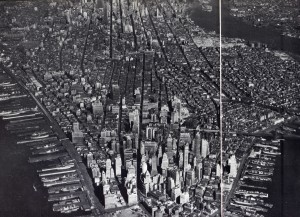
Miami Beach is ever-oriented between ocean and bay.
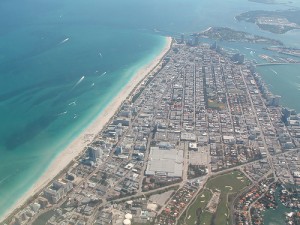
Most Greek villages run from a port, up the hill to a fort or church that takes the high ground.
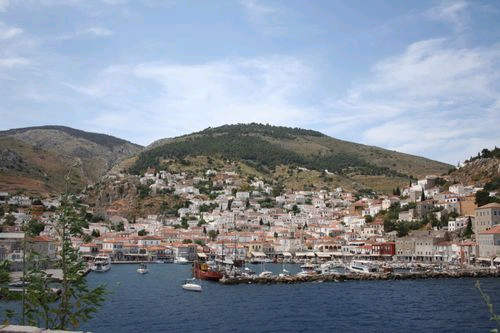
The ebb and flow of commercial activity and social life in these places can be anticipated. You can figure out where the main shopping streets are and where people go to relax.
Legibility works in different dimensions–from an aerial view popes, princes, and architects identify axes and connections through a city. But for the average boulevardier, legibility works in three dimensions, the feeling of the city as you walk through it, not fly over it in your royal helicopter.
Sure Parisian boulevards are magnificent,
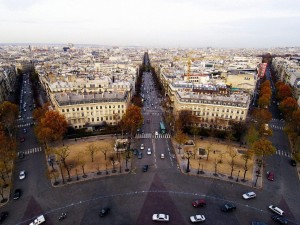
but this is why we go to Paris.
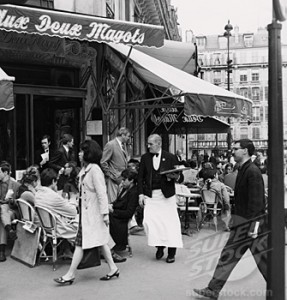
Just because things look neat on a plan, doesn’t mean they will be neat to experience in real life.
Mike
I think the planning board needs to spend more of its time making sure issues like the one below never happen. This one of the many reasons why this county is viewed as anti business and why Northern Virginia (Fairfax) has experienced more economic growth and prosperity then MoCo.
http://dcmud.blogspot.com/2008/05/bethesda-condos-nixed-by-developer.html
tuppenceforthebirds
Mike –
Not sure what that has to do with the blog post, but if you read down into the comment section of the link you posted, you’ll see that the fifth commenter writes:
“I agree that this project would have been a good addition to the neighborhood.
However, it is also true that 1) the developer’s original proposal went over the Bethesda master plan height limits, presenting a huge target for opponents, 2) the risks and costs for this sort of high-end project have increased dramatically over the past few years, 3) -two- projects on the -same block- have just been approved by the Planning Board. I don’t think that downtown Bethesda is at much risk for underdevelopment.”
When the global economy tanks, not every project is going to get built.
joe alfandre
Although I could sure use some “legibility” at the conclusion of some Planning Board meetings. It reminds me that the Paris we see and experience was mostly constructed at the hands of two dictators. And nobody had much fun walking the streets during the Communes. So let me ask you. Can we build the great place in a democracy? And can an independent Commission bend itself to the task? Or do we need another authoritarian coup d’etat, like um…. we had when the Commission was formed in 1927?
claudia kousoulas
I’m certainly not advocating for dictators! But there’s nothing wrong with a good capitalist grid, broken occasionally by the philanthropy of a Paley Park or the far-seeing public stewardship of a Central Park.
georgek
The great places are typically inorganic and show a strong hand: Paris, the Pope in Rome, Vienna, Savannah, McMillan, etc.. The wonderful little places are sometime organic: italian hilltowns. Our current predicament is that we have neither.
We don’t try to do the big stuff because we can’t–democracy won’t allow it. But the pace, scale and economics at which we build don’t provide a true organic growth. So you get a rockville town center that tries to come across as a spontaneous downtown.
georgek
On the limitations of planning:
This weekend’s NY Times ran an article on that old debate, which is better Central Park or Prospect Park (Brooklyn). The two parks are remarkably similar in many ways: 770 acres/Olmsted + Vaux (CP); 590 acres/Olmsted + Vaux (PP). The quality of their respective features are the true fodder for the rivalry and in some ways Brooklyn deserves the nod.
But…Brooklyn has no case.
Central Park is without peer, because it has the walls of Manhattan framing it. There is no other juxtaposition of the man-made and the (meta)natural quite like it. In its own way it is as well defined as the Place des Voges (5 acres).
But….it is an accident. The city wisely reserved the land in the middle of the nineteenth century, within a gridiron of planned streets, thus giving the park its shape. But that was it. The Manhattan of the 20th century did not exist, was not planned, yet we are lucky to have it wrapping the great park.
How can you plan that?
georgek
The [i]Place des Vosges[/i] is the epitome of planning by a single hand. It seems urban designer always seek the power of a French King, but hardly realistic. The power of Duany’s ideas stems form their common sense, but also the inclination to let nature take its course. In this sense they are a derivation of Manhattan’s grid and the rules that apply, but can hardly predict what Manhattan will be.
Allison25Luella
Cars and houses are not very cheap and not everyone can buy it. But, mortgage loans was created to support different people in such kind of hard situations.